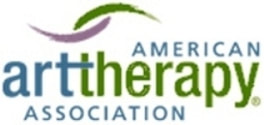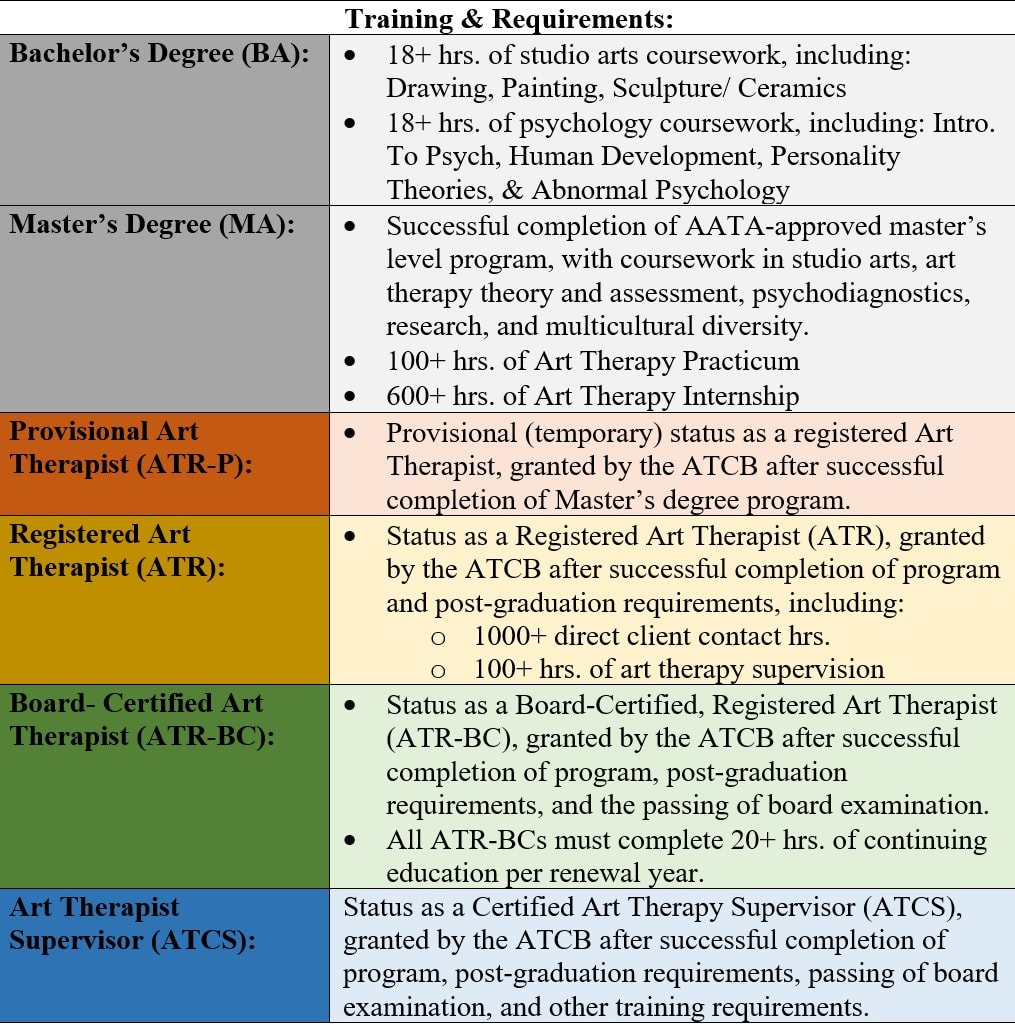What is Art Therapy?
Art Therapy is a master’s level mental health profession where art materials, the creative process, and produced artwork are explored to help clients’ express feelings, manage behavioral concerns, develop social skills, reduce stress, and increase self-esteem. The goal of art therapy is to improve/restore function and a sense of personal wellbeing. Art Therapy practice requires advanced knowledge of visual arts (drawing, painting, sculpture, etc.), the creative process, neuropsychological approaches, human development, theory, ethics, and counseling techniques.
Where do Art Therapists work?
Art therapists work with diverse client populations in individual, relational, and group therapy formats where the focus is placed on the inherent capacity for art making as a tool to enhance physical, mental and emotional well-being through artistic self-expression and reflection.
Art therapists work in a variety of settings with children, adolescents and adults. These include residential settings (hospitals, pediatric mental health institutes, emergency shelters), community-based programs (after-school programs, private practices, community groups), religious organizations, school-based services, crisis services and forensic institutes, aging community centers/retirement homes, rehabilitation programs, and wellness centers serving Iowans.
The Road to Becoming an Art Therapist!
For more on approved Masters programs: https://arttherapy.org/art-therapy-selecting-education-program/
For more on credentialing as an ATR-P, ATR, ATR-BC, or ATC-S: https://www.atcb.org/Home/FindACredentialedArtTherapist
Art Therapy is a master’s level mental health profession where art materials, the creative process, and produced artwork are explored to help clients’ express feelings, manage behavioral concerns, develop social skills, reduce stress, and increase self-esteem. The goal of art therapy is to improve/restore function and a sense of personal wellbeing. Art Therapy practice requires advanced knowledge of visual arts (drawing, painting, sculpture, etc.), the creative process, neuropsychological approaches, human development, theory, ethics, and counseling techniques.
Where do Art Therapists work?
Art therapists work with diverse client populations in individual, relational, and group therapy formats where the focus is placed on the inherent capacity for art making as a tool to enhance physical, mental and emotional well-being through artistic self-expression and reflection.
Art therapists work in a variety of settings with children, adolescents and adults. These include residential settings (hospitals, pediatric mental health institutes, emergency shelters), community-based programs (after-school programs, private practices, community groups), religious organizations, school-based services, crisis services and forensic institutes, aging community centers/retirement homes, rehabilitation programs, and wellness centers serving Iowans.
The Road to Becoming an Art Therapist!
For more on approved Masters programs: https://arttherapy.org/art-therapy-selecting-education-program/
For more on credentialing as an ATR-P, ATR, ATR-BC, or ATC-S: https://www.atcb.org/Home/FindACredentialedArtTherapist


